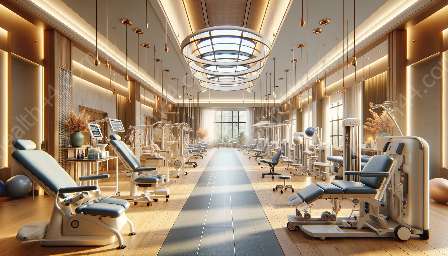Orthotic devices play a vital role in supporting and improving the function of the musculoskeletal system. As essential components of rehabilitation and medical care, they are compatible with various rehabilitation equipment and other medical devices & equipment. In this comprehensive guide, we will explore the significance of orthotic devices, their benefits, components, types, and how they integrate with rehabilitation and other medical equipment.
Understanding Orthotic Devices
Orthotic devices, also known as orthoses, are external appliances designed to support, align, prevent, or correct musculoskeletal disorders and injuries. They are commonly used to enhance mobility, reduce pain, and promote functional independence in individuals with physical impairments. Orthotic devices can be custom-made or prefabricated, and they are available for various parts of the body, including the foot, ankle, knee, hip, spine, shoulder, elbow, wrist, and hand.
Benefits of Orthotic Devices
Orthotic devices offer numerous benefits to patients undergoing rehabilitation and medical treatment. They provide support and stability to weakened or injured body parts, allowing individuals to perform daily activities with greater ease. Additionally, orthoses can help alleviate pain, promote proper alignment of body segments, and facilitate a more efficient recovery process. By reducing excessive strain on the affected area, orthotic devices contribute to improved mobility and functionality, thereby enhancing the overall quality of life for patients.
Components of Orthotic Devices
Orthotic devices are typically composed of several key components that work together to achieve their therapeutic goals. These components may include straps, pads, hinges, fasteners, and rigid or semi-rigid materials such as plastic, metal, or composite materials. Depending on the specific application and functional requirements, orthoses are designed to provide a precise combination of support, flexibility, and durability to address the individual needs of the patient.
Types of Orthotic Devices
There is a wide range of orthotic devices available to address various musculoskeletal conditions and functional limitations. Common types of orthoses include:
- Foot Orthoses (Orthotics)
- Ankle-Foot Orthoses (AFOs)
- Knee Orthoses (Knee Braces)
- Spinal Orthoses (Back Braces)
- Upper Limb Orthoses (Arm and Hand Braces)
- Wrist and Hand Orthoses
- Custom Orthoses for Specific Needs
Each type of orthotic device is designed to provide targeted support and assistance for specific anatomical regions and functional activities, ensuring optimal therapeutic outcomes for patients.
Orthotic Devices and Rehabilitation Equipment
Orthotic devices are fully compatible with a wide range of rehabilitation equipment, including exercise machines, physical therapy tools, and assistive devices. When incorporated into a comprehensive rehabilitation program, orthoses complement the effects of other rehabilitation equipment by supporting and stabilizing the affected body parts during therapeutic exercises, gait training, and functional activities. This integration promotes better functional recovery and enhances the overall efficacy of rehabilitation interventions for patients with musculoskeletal impairments.
Orthotic Devices and Other Medical Devices & Equipment
In addition to their compatibility with rehabilitation equipment, orthotic devices also integrate with other medical devices & equipment to provide holistic care for individuals with musculoskeletal conditions and disabilities. For example, orthotic devices may be used in conjunction with prosthetic limbs, mobility aids, and adaptive seating systems to optimize mobility, comfort, and independence for patients with diverse rehabilitation needs. The seamless integration of orthotic devices with other medical equipment underscores their essential role in promoting comprehensive and collaborative healthcare solutions.
Conclusion
Orthotic devices are indispensable tools in the field of rehabilitation and medical care, offering valuable support, stability, and therapeutic benefits to individuals with musculoskeletal impairments. By understanding the significance of orthoses, their benefits, components, types, and compatibility with rehabilitation and other medical equipment, healthcare providers can optimize the delivery of patient-centered care and enhance the functional outcomes for individuals seeking to regain mobility and independence.


